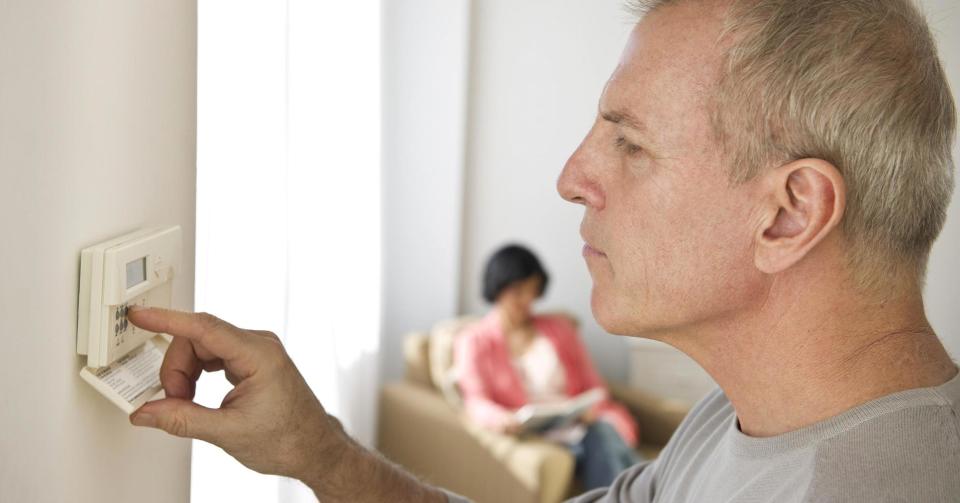This home energy system says it can save you up to $150 in utilities a month

Swell Energy, a startup based in Venice, Calif., wants to change the way millions of U.S. homeowners consume energy.
The bootstrapped startup on Wednesday announced EnergyShield, an energy management system that pairs a high-tech lithium ion battery — the same kind used by companies like Tesla (TSLA) — with sophisticated software that works together behind the scenes to help homeowners save between $70 and $150 each month on their utilities bill.
“Every home uses energy slightly differently,” explained Swell cofounder Andrew Meyer. “But we’re able to make sure that no matter what happens, users are able to use clean energy and save money.”
Here’s how it works: Homeowners have traditionally consumed electricity by drawing it off the local energy grid as needed. Traditional solar panel technology helps alleviate monthly utility costs somewhat by supplementing energy drawn from the energy grid with energy collected by solar panels.
Even with solar panels, however, the situation is less than ideal, largely because utility costs associated with energy drawn from the grid fluctuate, depending on the time of day. For example, electricity costs more during peak hours in the morning and evening compared to afternoon.
Energy Shield helps reduce costs further by intelligently drawing electricity when it costs less and storing it in the system’s battery for use whenever the homeowner requires it throughout their day. Energy Shield also kicks in to power several areas of the home (or the entire home) during blackouts for different periods of time depending on the bundle homeowners purchase.
Available later this year, the Energy Shield will be available in three bundles. The “Essential,” which will cost $29.95 a month, uses a battery capable of powering areas of your home non-stop for six hours and saves homeowners up $70 a month; the “Independence,” which will cost $49.95 a month, stores up to 12 hours of power and claims up to $80 in savings. And the “Luxury,” meanwhile, offers 26 hours worth of power, with claims of up to $150 in monthly savings. Swell’s founders claim that buying one of these bundles will pay for itself within 10 years of installing them.
Swell sees its efforts as a significant solution to the aging electrical grid, which remains under stress from American households, particularly as the US becomes increasingly dependent on more appliances and devices. Indeed, efforts to upgrade and modernize the U.S. electrical grid could cost as much as $1.2 trillion, according to some third-party estimates.
And while Swell is obviously just one entrant in a larger market, it’s making significant strides, including a contract with Southern California Edison to get 3,000 Energy Shield systems in homes. Eligible households will receive subsidies for purchasing a system. They’ll also be able to take advantage of statewide incentives, including a $25 million home battery fund that covers over 40% of installed costs of a home battery.
An appealing alternative? Sure. But Swell hopes that eventually its appealing alternative will eventually become a serious option millions of households throughout the U.S. will consider.
Correction: An earlier version of this article incorrectly stated that Swell’s founders claim buying one of its bundles would pay for itself within 10 months of installation. In fact, it’s 10 years. The error has been corrected.
JP Mangalindan is a senior correspondent for Yahoo Finance covering the intersection of tech and business. Follow him on Twitter or Facebook.
More from JP Mangalindan:
Sean Parker’s startup just unveiled a tool to help you be a smarter voter
San Francisco’s real estate market has reached ‘peak unaffordability’: housing expert
Facebook exec hints at ‘next logical step’ for Messenger
Apple isn’t the only giant US company being scrutinized for its overseas taxes

 Yahoo Finance
Yahoo Finance 
